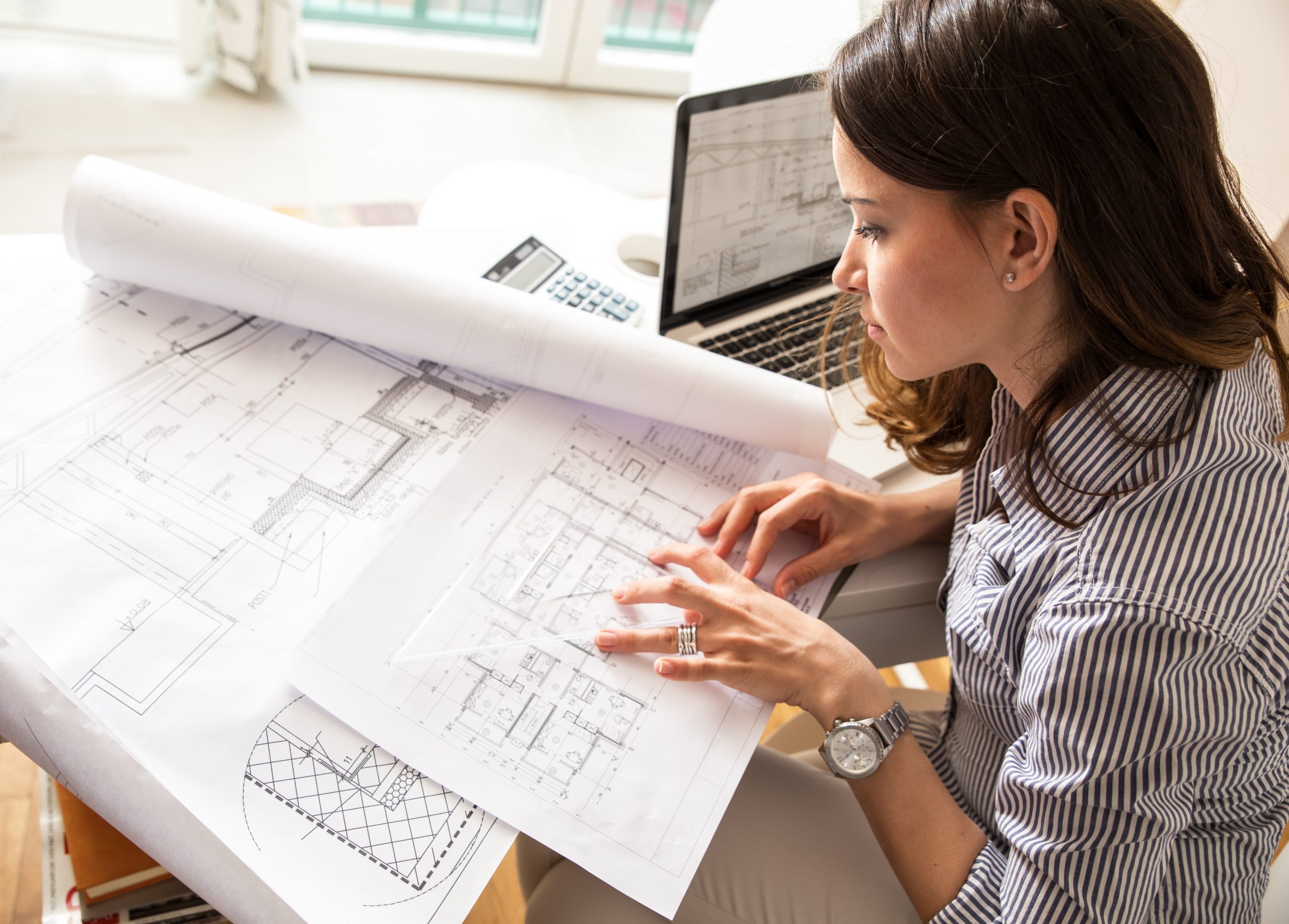Architect Career Path: Competencies, Education, and Development Guide
Architect Career Path: Competencies, Education, and Development Guide
Blog Article
Comprehending the Diverse Profession Paths Available for Aspiring Architect
As a hopeful Architect, you have a world of occupation paths waiting for you. Whether you're drawn to traditional design or the subtleties of lasting layout, there's a niche that straightens with your interests.
Conventional Style: Designing Structures and Structures
Conventional style concentrates on developing structures and structures that mix functionality with aesthetic appeal. As you explore this field, you'll appreciate the detailed equilibrium between type and objective. You'll find out to attract ideas from historic styles, including elements like balance, materials, and workmanship. Your designs can show cultural heritage, showcasing regional practices while meeting modern requirements.
You'll develop skills in preparing, model-making, and website evaluation, enabling you to envision and interact your ideas properly. Engaging with customers, you'll need to understand their vision and equate it right into feasible styles.
In addition, developing codes and sustainability methods are crucial in your work, guaranteeing your frameworks are ecologically pleasant and safe. As you grow in your career, you'll discover chances in property, commercial, and even repair jobs, each offering one-of-a-kind challenges. Accepting traditional design leads the method for a fulfilling job that pays tribute to the past while shaping the future.
Urban Preparation: Shaping Areas and Public Spaces
As a hopeful Architect, you can play a crucial function as an urban organizer, transforming just how neighborhoods work and interact. By employing community involvement methods, you'll ensure that locals have a voice in forming their environment. And also, integrating sustainable layout principles will certainly help produce spaces that not only fulfill today's requirements yet likewise secure the future.
Function of Urban Planners
While many could think about engineers as the sole dreamers behind buildings, metropolitan organizers play a vital role in forming the more comprehensive landscape of communities and public rooms. They examine land use, zoning legislations, and community requires to produce sustainable environments that enhance quality of life. By collaborating with different stakeholders, you'll aid make parks, transportation systems, and houses that advertise social interaction and ease of access. Urban planners also concentrate on ecological considerations, guaranteeing that growths incorporate eco-friendly spaces and support biodiversity. Your know-how in spatial layout and neighborhood characteristics permits you to picture future development while maintaining social heritage. In this critical function, you'll straight affect exactly how people experience their surroundings, making every job a chance for favorable adjustment.
Community Engagement Strategies
Efficient area interaction methods are vital for metropolitan planners to guarantee that the voices of homeowners are listened to and valued in the preparation procedure. To promote purposeful dialogue, you must prioritize open forums and workshops where neighborhood members can reveal their ideas and worries. By actively paying attention and including feedback, you'll produce areas that mirror the community's requirements, inevitably leading to more successful and sustainable urban environments.
Sustainable Layout Principles
When making metropolitan rooms, including lasting layout concepts is critical for developing atmospheres that grow both ecologically and socially. Take into consideration integrating eco-friendly spaces, like parks and yards, to boost biodiversity and improve air top quality.
Creating with water conservation in mind is also vital-- consider rain yards and permeable surfaces to take care of stormwater. Entailing neighborhood participants throughout the planning process assurances that the spaces you create satisfy their requirements and encourage social communication. By accepting these principles, you'll add to lively, lasting urban landscapes that profit everybody.

Landscape Style: Producing Sustainable Outside Atmospheres
As you explore landscape style, you'll find necessary layout concepts that produce attractive and practical exterior areas. Sustainable practices play an essential role in guaranteeing these atmospheres flourish while reducing environmental influence. And also, you'll discover a selection of profession opportunities that enable you to make an actual difference in how people communicate with nature.
Design Concepts in Landscape
Understanding style principles in landscape design is necessary for producing lasting outside settings that harmonize with nature. You'll require to consider aspects like range, proportion, and equilibrium to guarantee your styles feel cohesive and welcoming. Furthermore, pay focus to seasonal modifications, developing with materials that complement the environments year-round.
Lasting Practices Introduction
Sustainable methods in landscape style not only concentrate on aesthetic appeals yet also focus on eco-friendly health and resource preservation. You can design areas that advertise soil wellness, such as utilizing natural materials and exercising permaculture principles. Ultimately, these practices guarantee your styles profit both individuals and the atmosphere for years to come.
Profession Opportunities Expedition
With a strong structure in sustainable methods, landscape style offers a range of profession paths that permit you to make a purposeful influence on the setting. Urban planners often collaborate with landscape architects to create green rooms in urban settings, boosting city livability. If you're enthusiastic concerning education, take into consideration becoming a landscape design teacher, inspiring future generations.
Sustainable Design: Concentrating On Eco-Friendly Practices
As you discover your job in design, welcoming environment-friendly techniques can establish you apart in a competitive field. Sustainable design concentrates on producing structures that minimize ecological impact while enhancing occupant well-being. By incorporating eco-friendly products, energy-efficient systems, and sustainable structure methods, you'll contribute to a greener future.
Begin by acquiring understanding of environment-friendly qualifications like LEED or BREEAM, which can reinforce your credentials. Take into consideration how all-natural light, air flow, and thermal efficiency can maximize style. Work together with engineers and environmental professionals to innovate remedies that minimize waste and save sources.
Do not fail to remember the importance of area participation-- interesting neighborhood stakeholders can influence layouts that integrate with the environment. As clients significantly focus on sustainability, your expertise in green practices will certainly not only attract jobs yet additionally fulfill your passion for accountable architecture. Embrace this critical aspect of the occupation, and view your occupation flourish.
Historic Conservation: Shielding and Recovering Cultural Heritage
While you start on your building trip, consider the vital function of historical conservation in preserving our cultural heritage. This field focuses on the protection and repair of significant buildings, websites, and structures that inform the tales of our past. By participating in historical conservation, you'll assist protect the architectural legacy that shapes neighborhood identification.
As a historic preservation Architect, you'll evaluate historic value and evaluate the problem of frameworks. You'll work carefully with guardians and chroniclers to guarantee authentic reconstruction strategies are used. This occupation course allows you to blend creative thinking with research, allowing you to design services that respect original materials and workmanship.
Your job not just contributes to sustainability by reusing existing structures yet also fosters a sense of pride within neighborhoods. Accepting this course will help you end up being a guardian of background, maintaining the stories and aesthetic appeals that enhance our lives.
Inside Design: Enhancing Indoor Spaces
Historic preservation and indoor architecture both share a commitment to boosting the constructed environment, but they concentrate on various aspects. While historic conservation emphasizes maintaining a framework's social and historic worth, interior design zeroes in on maximizing indoor areas for performance and aesthetic appeals.
As an ambitious Architect, you'll find that interior design allows you to mix imagination with technological abilities. You'll design spaces that not only look great however also promote convenience and effectiveness. This area involves recognizing exactly how light, color, and products communicate within a room, impacting mood and functionality.
You'll service numerous jobs, from residential homes to business workplaces, making sure that each atmosphere satisfies the requirements of its passengers. other By prioritizing user experience, you can change insides into motivating and practical spaces, making a considerable effect on just how individuals interact with their environments. Welcome the possibility to improve interior environments and form the means people work and live.
Industrial Layout: Merging Performance With Looks
Industrial design plays an important duty in developing items that effortlessly blend aesthetic appeals with performance, making certain that what you utilize day-to-day is not only visually appealing but also useful. As an ambitious Architect, you might involve yourself in this area, concentrating on developing everything from furnishings to consumer electronic devices. Your job entails recognizing customer demands, products, and producing processes, enabling you to create innovative services that boost day-to-day experiences.
In industrial style, you'll usually work together with engineers, marketers, and manufacturers, guaranteeing that your designs are not just lovely but also possible. This occupation course provides a dynamic atmosphere where creative thinking fulfills functionality, making it a satisfying choice for designers interested in shaping the products of tomorrow.
Frequently Asked Concerns
What Educational Accreditations Do I Need to Become an Architect?
To come to be a designer, you'll need an expert degree in style, normally a Bachelor's or Master's. Additionally, you'll need to complete an internship and pass the Architect Enrollment Assessment to practice legitimately.
Are There Accreditation Requirements for Various Building Career Paths?
Yes, there're accreditation demands for various building courses. Architect. You'll require to pass tests, total internships, and often pursue specialized training, relying on your chosen focus, like landscape architecture, metropolitan layout, or historical conservation
What Software Program Abilities Are Important for Designers Today?

How Can I Gain Practical Experience While Studying Design?
You can gain practical experience by interning at building firms, taking part in layout competitions, volunteering for neighborhood projects, or working together with classmates on real-world assignments. These chances boost your abilities and develop useful links in the sector.
What Work Opportunities Exist Outdoors Standard Architecture Firms?
You can check out numerous task possibilities outside conventional design firms, like urban planning, interior decoration, landscape style, building and construction management, genuine estate growth, or even duties image source in sustainability consulting. Each deals one-of-a-kind challenges and rewards.
Whether you're attracted to conventional style or the nuances of sustainable layout, there's a particular niche that aligns with your rate of interests.When creating urban spaces, integrating lasting style concepts is vital for developing environments that thrive both ecologically and socially.As you check out landscape design, you'll discover important design concepts that create practical and attractive exterior areas.Recognizing design concepts in landscape style is important for creating sustainable exterior environments that balance with nature.In commercial style, you'll often collaborate with online marketers, designers, and producers, making certain that your styles are not just stunning however additionally viable.
Report this page